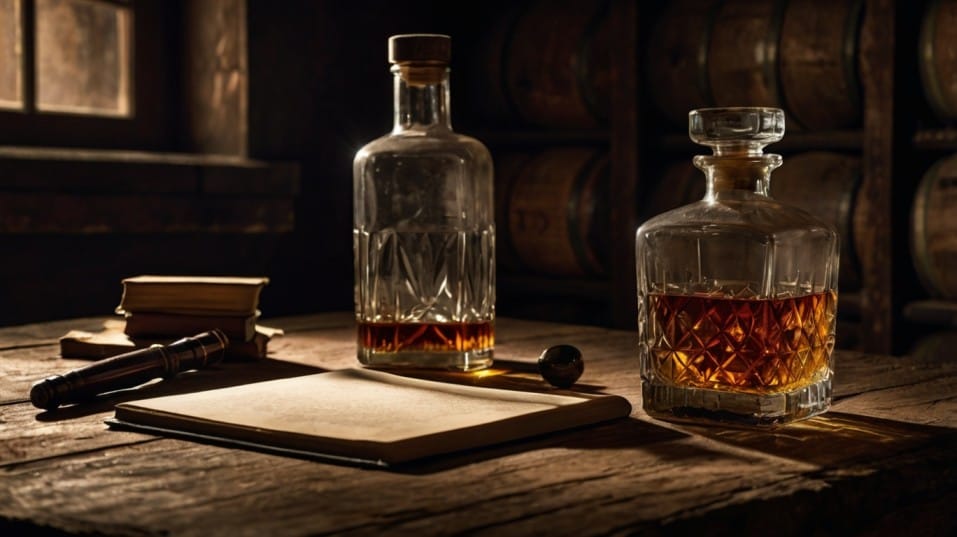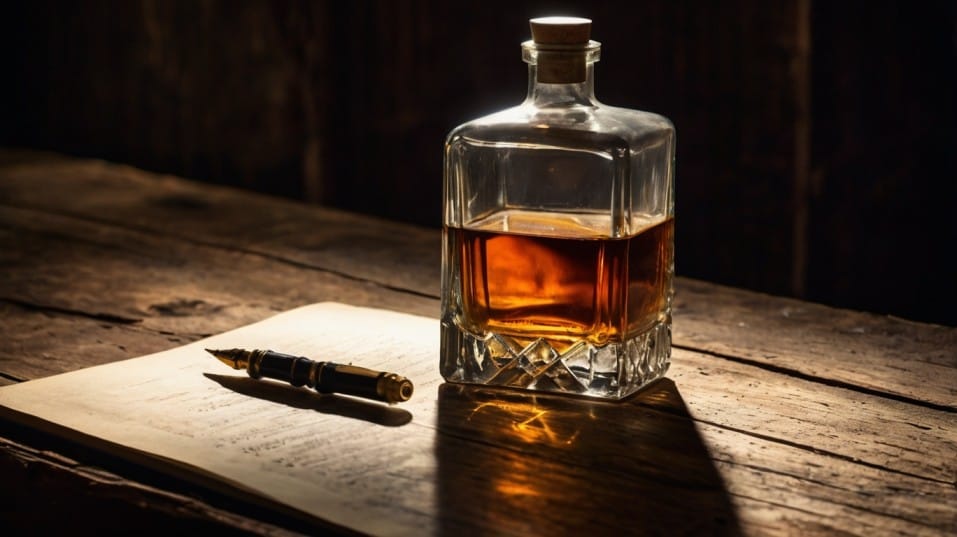How to Authenticate a Rare Whiskey
Learn how to spot fake whiskey and verify rare bottles with confidence. From labels to provenance, this guide helps you collect smarter.

Ever wonder if that rare whiskey you’ve been eyeing is the real deal—or just a clever fake? For collectors and curious newcomers alike, spotting the difference isn’t just impressive—it’s essential.
With counterfeits on the rise and hype clouding judgment, learning to authenticate rare bottles is how you level up. This guide breaks down what to look for, what to question, and how to drink with confidence—not confusion.
Look at the Bottle Like It Owes You an Explanation
Start with the obvious: packaging. Most fakes fall apart here. Labels, seals, corks, closures—these are the first giveaways if you know what to look for.
Even subtle things: raised lettering on glass, printing techniques that weren’t used in the supposed decade, or barcodes that shouldn't be there. Rare whiskey doesn’t just come in old bottles—it comes in right bottles.
Printed details matter more than sellers want to admit. If the font looks just slightly off, if the ink bleeds where it shouldn’t, or if a logo is placed millimeters out of alignment—that’s not character, that’s carelessness.
And a real distillery, especially a legendary one, doesn’t do careless. Look at the glass itself. Does it match what the distillery used in that time period? Is there a mold mark where none should be?
Collectors don’t get obsessive about these things just to flex—they do it because fake bottles often get the little things wrong. And if you can’t trust the glass, you sure as hell can’t trust what’s in it.

Labels Don’t Lie, But People Do
Take your time with the label. Check for wear, but not artificial damage. A 40-year-old label should look its age, not like it went through a belt sander.
Faded ink is fine. Crumbling edges? Maybe. But pristine white paper on a bottle that’s supposedly older than most of your furniture? Not likely.
And then there are fonts. Distilleries have updated branding slowly over time, but not randomly. If a 1970s bottle has a 2000s font or the trademark symbol is in the wrong spot, you’ve got problems.
The counterfeit world is better than it used to be, but it’s still often lazy where it counts.
Some fakes try to mimic tax stamps or age declarations with a little too much enthusiasm. Be skeptical of anything that looks like it’s trying too hard. Real vintage bottles often have imperfections—but they’re the right imperfections.
Dig Into Provenance Like You’re Building a Case
A rare bottle without a backstory is a red flag. A rare bottle with too good of a backstory? That’s worse. You don’t need a handwritten letter from the master distiller, but you do need a clear line of origin.
Where was it bought? When? Who owned it before? What photos, receipts, auction records, or distributor info support that chain of custody?
The best collectors keep records. They know where each bottle came from, and they’re not shy about sharing that info. When someone says, “It came from a guy I know,” that’s not history—it’s a dead end.
And no, a sealed cap isn’t enough proof. Re-sealing technology has come a long way, and even pros can be fooled by clean closures. Without a credible trail behind it, even the prettiest bottle could be a repackaged supermarket pour.
Taste Isn’t Always the Final Word—but It Helps
Let’s say you do open the bottle. You pour. You nose. You taste. What should you be looking for?
Complexity Over Drama
First: complexity. Rare whiskey—especially if it’s been well-aged or long-shelved—should evolve. It should challenge you.
You’re looking for structure, depth, balance, and maturity. If it tastes one-dimensional or overly sharp, something’s off.
Truth in Flavor
Second: honesty. A 25-year-old Scotch isn’t supposed to punch like a 6-year-old rye. A dusty bourbon shouldn’t coat your palate like caramel extract. If what you’re tasting doesn’t line up with the label’s age or type, it could be a refill or a fake.
That said, don’t expect every old bottle to be incredible. Some flavors fade. Oxidation changes things. Storage matters.
Even a real bottle might underwhelm if it spent twenty years in someone’s sun-soaked attic. But that’s different from a bottle that’s outright wrong.
Taste helps—but only when it’s in context. That’s why seasoned collectors trust their palate and their research.
Study Real Bottles Like You’re Training for a Job
You want to get good at this? You’ve got to do the work. Look at known examples. Study them. Compare glass styles, label layouts, fill levels, closures, fonts, and age statements. Make a folder. Save photos. Bookmark auction listings.
Talk to people who know more than you. Retailers, bottlers, serious collectors, or auction house staff. Ask real questions. Most are happy to talk if you’re not just looking for shortcuts.
These people can spot the tiny details that don’t show up in forums or Instagram reels. Things like screw cap threading variations, label glue styles, or what fill level is acceptable for a 1960s bottle of Scotch.
The more real bottles you study, the more obvious the fakes become. It’s not about memorizing tricks. It’s about developing a trained eye. And you can’t fake that—no matter how long you’ve been drinking whiskey.
Know the Market—but Don’t Follow the Crowd
Authentication isn’t about hype. It’s about history. Don’t let trends or bottle buzz cloud your judgment. Just because a certain label is hot right now doesn’t mean it’s worth chasing—or that it’s authentic when you do find it.
And while you’re at it, learn to spot artificially rare bottles. Some brands engineer scarcity by slapping a wax top and a number on a bottle of average whiskey. That’s not rarity—it’s marketing. A truly rare bottle wasn’t created to be rare. It just is.
Understanding the market helps you spend smarter. It helps you sniff out scams, walk away from overpriced mediocrity, and focus on the bottles that actually matter. Not the ones everyone else is chasing on Reddit.
Final Thoughts
Authenticating rare whiskey isn’t just a safeguard—it’s a skill set. It sharpens your eye, trains your palate, and turns you into the kind of collector who doesn’t get fooled, hyped, or hustled.
If you’re just starting, don’t worry about being perfect. Worry about being curious. Pick a bottle you’ve always wondered about. Study it. Ask about it. Compare it to trusted examples. Make a habit of learning, and the confidence will follow.
Whether you’re building a collection, buying a pour, or just trying to drink with more clarity—there’s power in knowing what’s real. So go find a bottle worth questioning, and start proving it—today.




